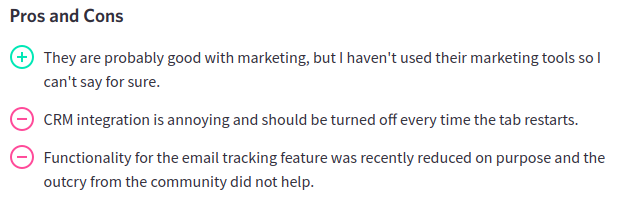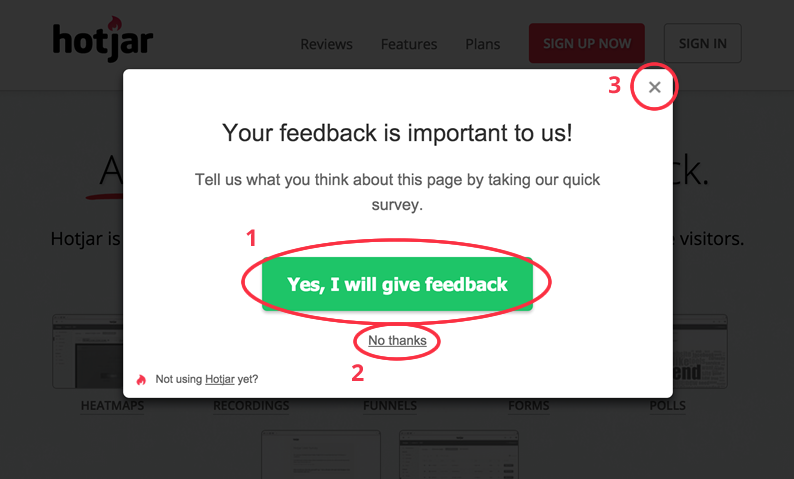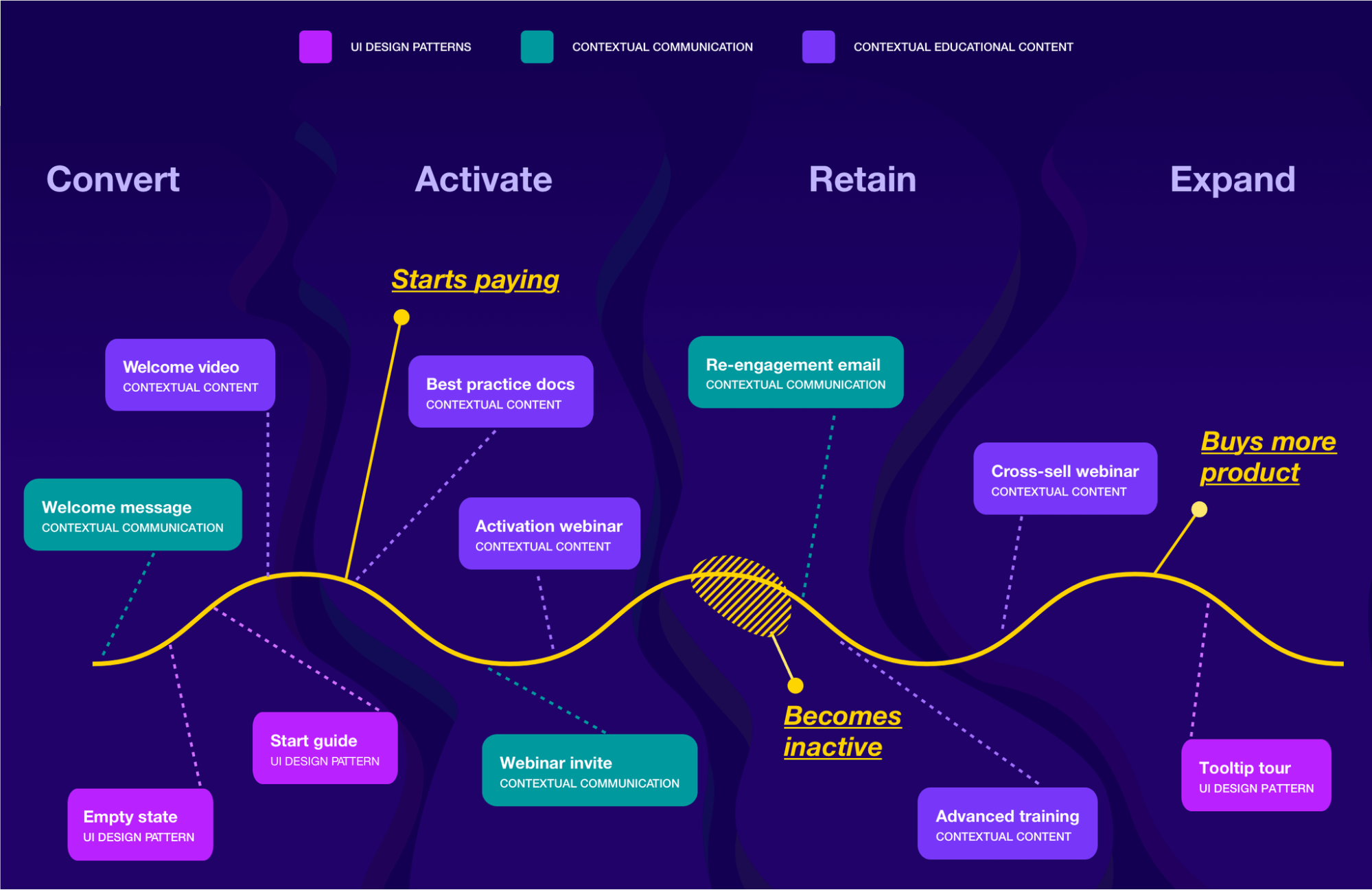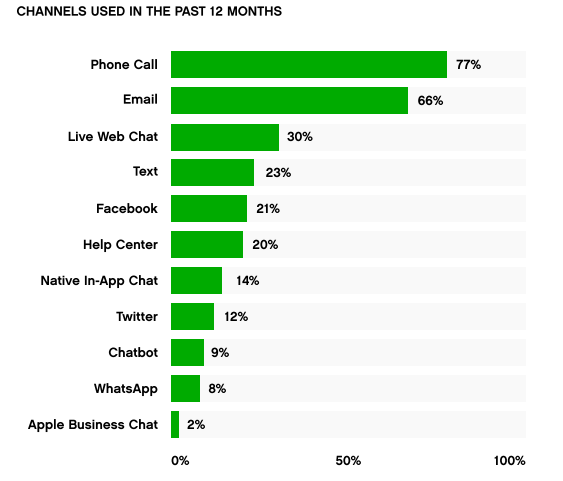The ecommerce industry is highly competitive. Anyone with a few thousand dollars to spare can start a dropshipping business, and many do. This drives up the price of advertising online and makes the cost per acquisition for each new lead rather high.
But even if the cost of acquiring a new client in your niche is higher than the first purchase they make, it’s not a big deal. The real value of each customer is not their first purchase, but their LTV, or lifetime value.
Put simply, if it costs you $100 in marketing fees to get a new client, but over the course of three years that this client stays with you, you earn $1000, it’s a net profit.
The problems begin when customers leave before expected, leaving you with little to no return on revenue. If customer churn in your business is higher than average, it could have serious consequences for your bottom line.
Want to learn more about customer churn and how to make existing customers stay longer with you? Hop on to this ten-minute read, and you’ll learn just that.
What is customer churn and why should you care?
While your ecommerce store is doing fine, it can be easy to disregard improving customer churn. After all, why would you spend time and energy on the 10% of customers who leave if you can always get new leads from ongoing marketing campaigns?
As it’s evident in 2020, you can never know when the next stock market crash occurs and sends the economy in a downward spiral. This is probably the best time to have a loyal customer base.
But even if we forget about the state of the global economy in 2020, reducing customer churn is still a worthy business goal. It’s an essential part of conversion optimization that can help you reduce marketing spending and increase customer LTV. And that’s always a good thing.
Besides, high customer churn may indicate that you have a problem with your business that you don’t address. If you figure out what this problem is in the process of reducing customer churn and improve it, the long term benefits will extend far beyond the scope of conversion optimization alone.
With that in mind, here’s how to reduce customer churn.
1. Analyze the Reasons for Customer Churn
There are a lot of tips that may help you improve customer churn. There’s just one tip that will give you a sense of direction in what you’re doing. You need to understand the reason people leave to make sure you’re fixing the right issues.
This is a huge issue because, for the most part, you won’t know why a person left. You’ll just see a percentage of how many people left your company.
According to research by Esteban Kolsky, only 1 in 26 unhappy customers will actually leave a bad review. The other 25 will silently choose your competitor.
Since one person is bound to leave a bad review when they leave, you can start studying your failures from there.
Start by Analyzing Customer Feedback
You don’t need to guess what people think about you. You can gather all the information you need by looking up reviews online. Form a list of review websites in your industry and look for customer feedback. If that doesn’t help, check your Facebook page for reviews or just google “your company review” and look for user reviews.
You don’t want to focus on the positive reviews, though. Pay close attention to negative feedback on all platforms and analyze it. Doing a Twitter audit to see what people write about you helps as well.
If some of your former patrons were generous enough to go in-depth on what they didn’t like about the company, it’s great for you. Despite some bad publicity, you can learn what you should improve upon. This negative review of HubSpot on TrustRadius is a great example of a disgruntled yet fair customer.

A one-time complaint may not be a cue to action. If you’re seeing multiple people saying that your software lacks this one feature or your customer support takes too long to answer, you know what to do.
Ask Your Customers for Feedback Directly
Now that you’ve seen what one out of 26 people who leave have to say, let’s try to understand why the other 25 left. The easiest way to do this is to ask for feedback when they’re leaving.
If in your business model leaving means canceling an account, ask them what led them to cancel when they do that. You can handle this with a pop-up survey on the cancellation screen or by having your support team ask them this question when managing a cancelation ticket.
If churning customers in your niche just never come back, target those who haven’t bought from you for a long time with a survey email marketing campaign. You can try to bring them back while you’re at it. You’ll learn how to do that later in the article.
Interviews customers
Do you run a B2B company that has few high-paying clients? You’re in the best position to ask for feedback! Either you or a sales representative must have a relationship with the client that is about to leave or have left already. Just reach out to them and ask for honest feedback.
For most other businesses, this can prove to be too hard. But if you can manage to get some of the former clients on a phone call and ask them why exactly they left, it would be amazing.
A first-hand account of what happened and why they chose your competitors is just what you need to understand what aspect of your business you need to improve. Make sure you’re listening to their criticism, not antagonizing them, though.
Measure customer satisfaction
The last point on learning more about why customers leave your business is more about prevention than post-churn analysis. Run customer satisfaction surveys that include at least a CSAT (customer satisfaction score) and NPS (net promoter score).
Running these surveys is relatively easy to handle. Get yourself a survey software and run quick pop-up surveys like this one from Hotjar.

If you don’t have the budget for the software, you can just create a Google Form and send it via email or any other engagement channel. The most basic CSAT survey is a question like “How happy are you with our service” on the scale of one to ten. The NPS is a question like “How likely are you to recommend our service to friends” on the same scale.
Make sure to include an open question asking for a comment in case the person doesn’t like the service. Some people will skip it, but you’re still going to receive some advanced feedback.
Now that you’re equipped to understand why customers churn, let’s look at some common problems and common solutions to them.
2. Make Your Onboarding Process Intuitive
This is an extremely useful tip for XaaS companies. Free trials are essential for growing the customer base, and as you may already know, many people never return after a trial. According to Stripe’s Patrick McKenzie, 60% is a conversion rate of trials requiring a credit card that you should strive for. If your numbers are below that, you have room for improvement.
Does the number of people who never return after a trial include some who genuinely didn’t like your product’s features or found a similar product for a more competitive price? Sure. But it also includes people who struggled with using your product.
Create a customer journey map for your onboarding flow, look for weaknesses, and make sure you reach all of your customers. For instance, HBR showed that providing a tutorial at an early stage can reduce churn by 6%.
If you need a working template, steal this roadmap from Intercom that they’ve dabbed C.A.R.E.

3. Re-engage Customer are at Risk of Churning
If your client shows signs that suggest they may leave soon, you need to act before they do so. What tactics you’re going to use depends on what type of business you run. The general premise stays the same in any industry. Find people with high churn potential and target them.
If a customer stops visiting your website or app, try to engage them via a channel that they tend to respond to most. Reach out to them if they haven’t made a purchase in quite a while. Automated email triggers are amazing for this. Give them a great deal on a product or introduce something new, and they may come back to make another purchase.
Now, what if a customer stops responding to your engagement channel? There’s no point in bombarding them with emails if they just don’t open them. This is why you need more than one channel of engagement.
Try to find a channel your customer responds to. SMS marketing, social media, and push notifications in the app are great channels to start with. If they don’t respond to any of those, try including this customer in a retargeting ad campaign.
Make sure you set a limit on how much you interact with a customer before it’s time to admit they’ve left you and won’t be coming back. There’s no point in wasting your marketing budget on a small fraction of customers who do not engage on any level.
4. Try to Reduce “Involuntary” Churn
Not all customers leave because they don’t like your product or customer service. Some just default on a monthly payment because their credit card fails and don’t come back. Credit card expiry of dunning is responsible for a small percentage of customers leaving, but it’s a type of churn that you can easily optimize.
How can you prevent this from happening? Track the credit card expiration dates and send out pre-dunning emails reminding the customer to update his credit card information.
Make sure these emails are not aggressive, though. A subject line like “Did you update your payment details” will do much better than “YOUR CARD IS ABOUT TO EXPIRE.”
Since pre-dunning emails are not going to work for every customer, you’ll need to create a chain of recovery emails as well. Create automated emails that get sent to customers who missed a payment asking them to update credit card details. Don’t forget to retry their credit card, though. Sometimes it fixes the issue.
Another minor improvement that may reduce involuntary churn is making password recovery easy. If a person’s credit card failed and they don’t remember the password, they may as well look for alternatives before contacting your support for recovery.
5. Improve customer experience
If you’re going to follow the very first tip in this article, you’re going to measure the customer satisfaction score. It’s a simple survey that shows how much are your customers happy with your services on a scale from one to ten. You can expand this survey and ask questions about satisfaction with your product and customer support to learn what you should focus on.
If your customer churn is high, it’s more than likely that customers are not happy with the support they’re receiving. According to Gladly’s 2020 Customer Expectation Report, 51% of customers are willing to switch brands after just two negative customer service interactions.
Besides, improving customer service has great potential for customer retention. 65% of U.S. consumers say they value customer experience higher than advertising when it comes to choosing a brand. According to PWC, you can also charge a 7%-16% premium for your services if you have stellar customer experience, so the benefits of improving CX go far beyond reducing customer churn.
Humanize Your Customer Service
Your first priority is humanizing customer service. Personalize communication and create a new copy for standard answers.
If your business is not that huge, you probably won’t be able to fully personalize customer service. After all, advanced tracking software is not free and you may not have the budget for that. However, you can still do some personalization.
At the very least, always refer to a client by their first name. If you have a customer relationship management system (and you probably should), make sure it displays all interactions with the customer so that any support agent handling them knows their full history with the company.

An admin panel like this shows the sales reps all the interaction history and lets them know the context your company has with this client. As a result, the sales rep has more instruments to have a better conversation with them.
Then, you want to have a look at your standard support copy and improve on it. Rewrite the parts that sound a bit robotic and add a bit of sympathy in there.
You want your customers to know that you care about them. According to the Institute of Customer Service, you can increase customer trust by 12% if you increase CSAT but just 10%. If customers do trust you more, they’ll be more likely to complain instead of leaving.
Engage on Multiple Channels
The next thing you should do is expand the channels that you’re available at. Gladly report shows that 86% of customers expect you to interact with them on multiple channels. They also expect you to recognize them on different channels.
The easiest way you can do this is to ask them to provide you with all the contact details and sort them together in your CRM. You’ll need to include at least the five top customer service channels discovered by Gladly.

Provide Faster Services
Did you notice that the graph above shows that the help center is used just as frequently as Facebook Messenger for support? This indicates that customers will opt for a faster way of solving their problem even if they have to do it themselves.
Creating a help center can be a lot of work, but it may take some workload off your support team’s shoulders. What’s even more important, it helps you solve common problems faster, providing a better experience.
Another smart way to use social media to provide a faster answer is to run a chatbot. Configuring one in Facebook Messenger or in your live chat won’t be too much work, but it will save you and your customers a ton of time.
Include answers to frequently asked questions and you’ll have a happy customer and a happy support team member who doesn’t have to answer them twenty times a day. Make sure to include the option to connect to a human fast, though. Not all customer support problems can be solved by a scripted conversation.
6. Create a knowledge hub
There are a lot of direct methods of confronting customer churn. There’s also an indirect one. James Parsons, a Forbes contributor from Content Powered, offers an insight — keep customers coming by creating a knowledge hub on your website.
As it’s always the case with content marketing, this strategy is a long-term one, but the payoff may be worth waiting for. Most successful SaaS companies, from Moz.com to Wishpond, have a blog or a learning hub. Apart from its obvious goal of driving traffic via organic search, it serves another purpose.
It grooms leads from the very first stages of the sales funnel and communicates to them that your company is the expert in the field. As they start to rely on your advice, provided it’s really good, fewer active customers will consider jumping ship.
People trust authority, so having a blog or a learning hub is going to add another psychological trick up your sleeve. On the more practical side, creating an easy-to-understand learning center for the product you’re selling is going to facilitate onboarding.

A help center like this one on the Adobe website helps reduce customer churn that happens when onboarding fails. It helps customers get answers to their questions faster with no need to contact the support.
Bonus: Improve Your Product
Let’s face it. You can track CSAT and NPS, you can implement all the best practices of reducing customer churn, but if your competitors have a better product for a lower price, you’re in danger.
One of the best ways to reduce customer churn is to improve your product. This is why Adobe is able to remain on top of the competition. The company offers an unprecedented package of services so the customers practically have nowhere to churn.
Now, you may not be aiming to become a SaaS giant like Adobe, but it’s helpful to follow the words of the company’s CEO Shantanu Narayen: “Reduced churn is the new growth.”
Do what Adobe does, study your customers’ needs, and improve your product to match them.
Your exact course of action depends on your industry and your target audience. The main advice is to get constant feedback from your customers and follow it to fix bugs and add new features and products.
That’s not something you can improve overnight, but the benefits you can reap from this are also long-term.
It’s Never Too Late to Reduce Customer Churn
Not all steps from this guide can be implemented fast, but all of them have long-term benefits. Reduce customer churn rate, and you get a net gain in profits.
If you have to choose one step to implement first, make it analytics. Start gathering data to see how many customers are actually leaving you and why do they do it. This will give you a headstart and help you decide what tips to implement afterward.
Invest in improving your business based on the feedback you gather, and your competition will be spying on you, not the other way around!
About the Author

Michael Doer is a content marketer who’s focused on combining creativity and strategy in his work. Follow him on Twitter and text “I found you on Wishpond” to get more free marketing tips.


